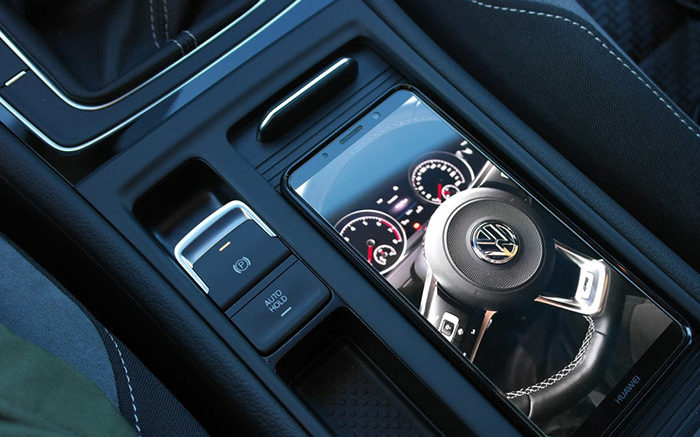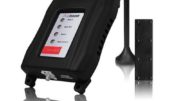The global automotive artificial intelligence market is projected to reach $15.9 billion by 2027, growing at a CAGR of more than 39% from 2019, according to GlobeNewswire. Several decades after watching Star Wars, Jamieson Christmas believes that he has found the perfect use of real-life AR holograms. Christmas, the founder of Envisics, a U.K based company, told Digital Trends, “I’m a child of the 1970s. I grew up when Star Wars was first released, and what fascinated me was the idea of holography.”
Recently, Envisic developed a headset-free in-car holography system. This technology aims to transform how drivers view the road while driving. It will give cars an augmented reality overhaul similar to the heads up display (HUD) found in fighter jets and commercial airplanes. Like other in-car technologies, such as Android Auto and Apple Carplay, the augmented reality hologram is expected to enhance vehicle safety. Here are some advanced in-car gadgets and tech you should consider.
In-car Speech Recognition
Most of today’s new car navigation systems come equipped with speech recognition software to enhance safety. Ideally, safe driving behaviors require drivers to ignore text and calls while behind the wheel. However, disconnecting from smartphones isn’t a reality for many drivers. For this reason, carmakers are leveraging voice technology to ensure drivers stay focused on the road while communicating. In-car speech recognition systems like Apple’s Siri and Amazon’s Alexa limit distractions as they allow you to reply to texts, send emails, or make calls using your voice.
Blind Spot Monitoring System
Blind-spot monitoring or warning systems are vital safety components in an automobile. These sensor-based systems give drivers visual and audible alerts when another vehicle is alongside their car in a blind spot. The blind-spot detection might also come integrated with the rear cross-traffic function, which warns drivers of impending traffic when driving out of a parking lot. The rear cross-traffic function can apply brakes automatically when it detects a potential collision, depending on the car model you’re driving. Note that not all vehicles come equipped with blind-spot monitoring technology. This is why you need to review car rankings shared by verified vehicle owners before making a purchase. Doing so will help determine if your desired automobile has in-car advanced safety features.
App Integration
Today’s commuter wants to stay connected to their apps and music playlist. To meet consumer needs, automakers offer infotainment systems or in-car accessibility to an array of smartphone applications. These systems aim to reduce distractions by displaying everything on the dashboard screen from Google Maps satellite images to a digital speedometer and mobile apps. Most infotainment systems in the market leverage the user’s mobile data connection. But some rely on an embedded cellular modem to send and receive data at a monthly service fee.
Advances in technology have transformed the driving experience in many ways. Today’s drivers can view car details like speed, engine status, and directions on their windshield. This is because most high-end cars come equipped with 3D augmented reality HUD technology. You can also reply to messages without worrying about causing an accident thanks to voice recognition systems. Other in-car technologies worth looking for include blind-spot detection, expanded Bluetooth, infotainment systems, and telematics.





